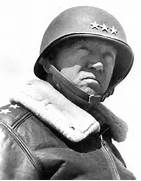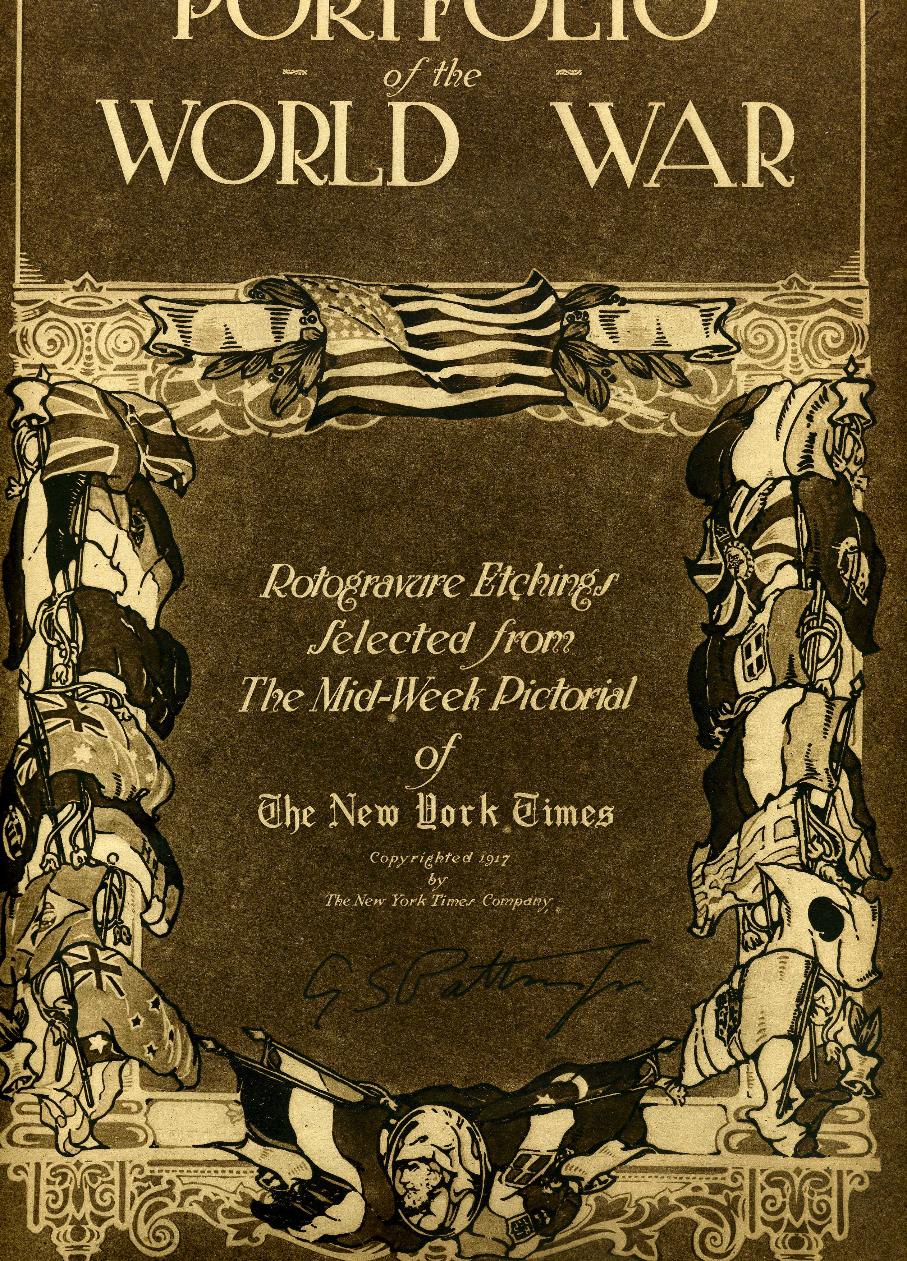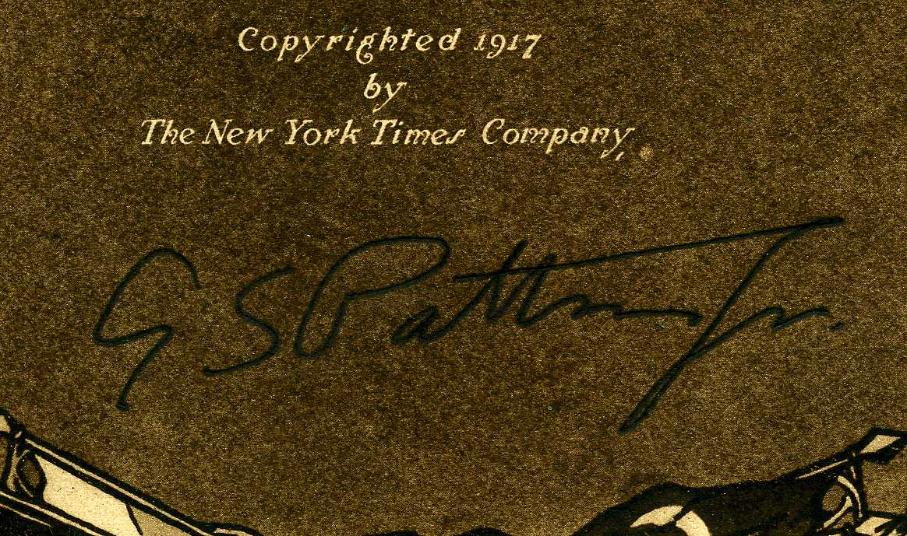General George S. Patton, Jr. Signs WW1 New York TimesPortfolio

General Patton signed this copy of the New York Times "Portfolio of the World War." The book was published in 1917. Signed, "George S. Patton, Jr." in black ink. In November of 1917, Patton was given the task to start an American Expeditionary Force (AEF) Light Tank School. He reported to a training school in France and later that month, the British would launch the largest to-date tank battle of World War I. On December 1st, Patton had finished his tour and reported to Albert where he was briefed on the result of the tank battle by Col. Fuller, the chief of staff for the British Tank Corp. On January 26, 1918, Patton became a major. In March, he received the first of his tanks – ten in all – at the Langres, Haute-Marne Tank School. As the only soldier who had any experience driving tanks, Patton backed out seven of the tanks off the train himself. Patton was responsible for training tank crews to operate in support of the infantry troops. He was also able to promote this concept and gain acceptance among the infantry officers. In April of 1918, Patton received another promotion to lieutenant colonel.Patton with a Renault Tank in 1918 Several months later, Patton was put in charge of the US 1st Provisional Tank Brigade – known as the 304th Tank Brigade from November, 1918 forward. He oversaw the logistics of the tanks in WWI (the first combat use of tanks by US forces). After scrutinizing the first target area, Patton issued an order that no US tank should be surrendered. Patton made sure he was visible throughout the tank battles, leading them in, riding on top and even walking into a town on foot. Patton was wounded in the thigh as he led six of his men and a tank in an attack against German machine guns. Pvt. 1st Class Joe Angelo was credited with saving Patton, and as a result, later received the Distinguished Service Cross for his actions. Before being evacuated for medical treatment, Patton continued to command the battle as he lay in a shell hole. As he was being evacuated to the hospital, he first stopped at the rear command post to turn in his report. While recuperating, Patton received yet another promotion – colonel in the Tank Corps of the US National Army. Less than two weeks later on October 28th, Patton was able to return to duty but experienced no further action as the war ended with the armistice on November 11, 1918. As a result of his actions and wound in WWI, Patton received the Distinguished Service Cross, the Distinguished Service Medal and the Purple Heart – which was issued to him later as it was not created until 1932. George S. Patton’s military career did not stop at the end of World War I. In fact, most would probably agree that it was just the beginning.

